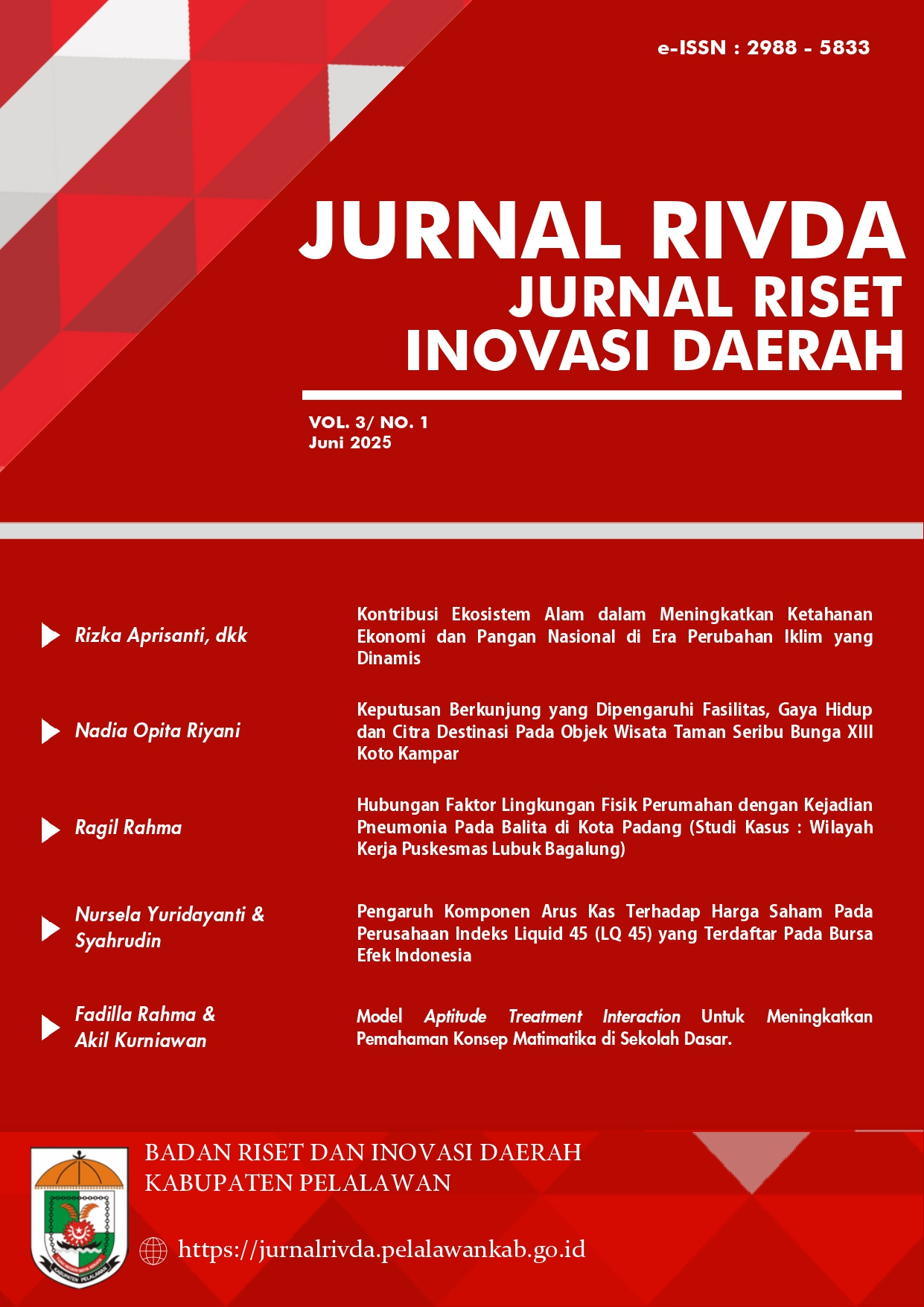Hubungan Faktor Lingkungan Fisik Perumahan dengan Kejadian Pneumonia pada Balita di Kota Padang
Studi Kasus : Wilayah Kerja Puskesmas Lubuk Bagalung
Kata Kunci:
Pneumonia, Ventilasi, Kelembapan, Pencahayaan, MerokokAbstrak
Pneumonia merupakan salah satu penyebab utama kematian pada balita, terutama di negara berkembang seperti Indonesia. Faktor lingkungan fisik rumah tangga diyakini turut berperan dalam meningkatkan risiko kejadian pneumonia. Penelitian ini bertujuan untuk menganalisis hubungan antara faktor lingkungan fisik perumahan, yaitu luas ventilasi kamar, pencahayaan alami kamar, kelembapan kamar, kepadatan hunian kamar, dan kebiasaan merokok anggota keluarga, dengan kejadian pneumonia pada balita. Penelitian ini menggunakan desain kuantitatif dengan pendekatan cross-sectional. Jumlah sampel sebanyak 36 responden yang dipilih secara purposive di wilayah kerja Puskesmas Lubuk Begalung, Kota Padang. Data dianalisis secara univariat dan bivariat menggunakan uji chi-square. Hasil analisis menunjukkan bahwa terdapat hubungan yang signifikan antara pencahayaan kamar balita (p = 0,045), kelembapan kamar balita (p = 0,011), dan kebiasaan merokok anggota keluarga (p = 0,002) dengan kejadian pneumonia. Sementara itu, luas ventilasi (p = 0,081) dan kepadatan hunian kamar (p = 0,715) tidak menunjukkan hubungan yang bermakna. Faktor pencahayaan, kelembapan kamar, dan kebiasaan merokok di dalam rumah terbukti berhubungan dengan kejadian pneumonia pada balita. Intervensi lingkungan fisik rumah tangga perlu dilakukan untuk menekan risiko pneumonia, terutama pada kelompok usia rentan.



